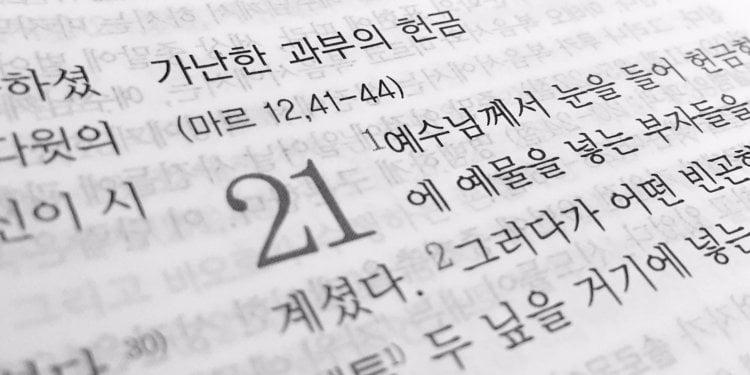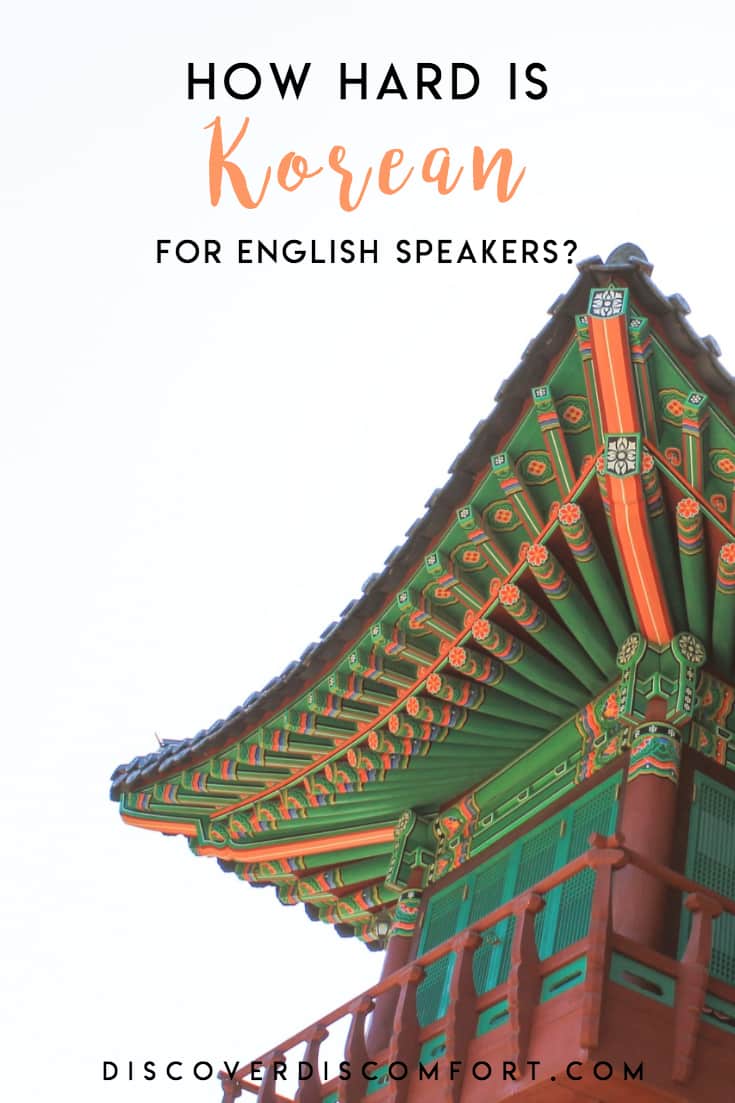How Hard is Korean for English speakers? Three Years Review
This is my answer to the question “How hard is Korean for English speakers?” after three years of learning, including spending time in Korea.
In early 2020 I began learning Korean in earnest. It was originally in preparation for a planned three-month trip to Korea, which happened in late 2022.
I originally wrote this after a few months study, then updated it after a year and now after nearly three years. My level now is “beginner conversational”. My classes are nearly entirely in Korean (other than if I really get stuck), and I do all everyday things (food, market shopping, hobby classes) in Korean. I often don’t understand things, though!

In the process of studying Korean, I’ve learned a lot about the Korean language, especially a bunch of things I didn’t expect (that I wrote a whole article about — things nobody told me about learning Korean).
As planning out how much I’d have to study Korean every day to get conversational I began to wonder was: how hard is Korean, really? Specifically for English speakers, and maybe for someone who already knows Chinese? (Which is me, but is also another ~1.5 billion people.)
The short answer: Korean is not too difficult. In fact, I’d put it as one of the hardest languages I’ve learned. Despite Korean being fairly early to learn how to read, I’d say Korean is quite hard to learn (a 4/5 in difficulty) — harder to get to fluency for an English speaker than French or German, but easier than Chinese or Arabic.
For each of the below aspects — alphabet, grammar, pronunciation and vocabulary — I rate as on a 1-5 point difficulty scale: “Very easy, Pretty easy, Moderate, Kinda hard, Very hard”.
Note: I’m still learning Korean, and am roughly at the “Intermediate” stage. Korean was harder than I expected. It’s not a language to learn casually on the side unless you don’t expect to get very far.
Contents
“How hard is Korean” overall: 4/5, or “Moderately Difficult”
I’m giving it this rating based on assessing:
- Alphabet: 2/5, “Pretty easy”
- Grammar: 4/5, “Moderate” (I realised this was harder as time went on)
- Pronunciation: 3/5, “Moderate”
- Vocabulary: 5/5 “Very hard” (Note: I have revised this after learning a few thousand words)
What does this rating of “moderately difficult” mean in reality? It means that if you are planning on getting very far in learning Korean in a year or so, an average learner should dedicate around two to four hours a day every day to studying it intensely, with at least a few hours of class time a week, plus homework drills.
How hard the Korean alphabet is: 2/5, “Pretty easy”
Let’s start with the good news… Korean is moderately easy to read (and write, but I’m not focusing on that).
In fact, you could definitely learn to read it in an hour or two, and get good at it with just a few days of practice.
Korean is written in its own alphabet, called Hangul (sometimes written Hangeul). At first blush, if you have no idea how Hangul works, it looks like Chinese — like characters.
On closer inspection, you’ll see far more common traits than Chinese characters have. (Chinese characters share a pool of ~250 “radicals” that make them up, but that’s for another time — see the article on Chinese language facts, if you’re interested.)

Korean is written in little parcels of letters. Each one is a consonant block. They usually are standalone, but some of them are pronounced together, similar to French liaison.
Each consonant block in Korean is made of two to five elements, usually two or three. It’s usually as simple as a consonant and a vowel, or maybe two consonants sandwiching a vowel. These are combined into one consonant element, and then those consonant elements are grouped into words.
Some examples:
- 가 – combination of a ㄱ(G) and a ㅏ(A) to become GA
- 바 – combination of ㅂ(B) and ㅏ(A) to become BA
- 보 – combination of ㅂ(B) and ㅗ(O) to become BO. Note these stack vertically
Some slightly more complex examples:
- 밥 – combination of ㅂ(B) and ㅏ(A) and another ㅂ(B) to become BAB
- 랑 – combination of ㄹ(R), ㅏ(A), and ㅇ(NG) to become RANG
- 없 – combination of ㅇ(silent before a vowel), ㅓ(EO), ㅂ(B), and ㅅ(S) to become EOBS
There is a discrete number of combinations possible (it’s not infinite), and not that many letters to learn.
Korean is written left to right. The writing system is standardised with few exceptions (a few words are slurred for ease of use, but who’s going to complain about that).
There are a few complications with Korean reading / writing.
Firstly, it’s not entirely phonetic. In modern spoken Korean, there are a few vowels that sound identical, like 에 and 애, both of which have an open “e” sound.
Secondly, sometimes consonants aren’t pronounced, or change in pronunciation depending on the following letters. For example, the word “석류”, if you were to use basic phonetic rules, would be pronounced “seok-lyu”, but you actually have to morph it to “seong-yu”. Luckily there are rules for this, and they’re nearly 100% consistent (just very few rare exceptions).
Finally, there are consonants which to the learner’s ear sound similar. I get tripped up between the multiple K-sounding letters, ㄱ, ㄲ (which is the double, but sometimes hard for me to hear), and ㅋ. Same goes for hearing the difference between ㅂ, ㅃ, and ㅍ.
Those things make reading Korean not as easy as, for example, reading a romanized Korean word. But it’s still a lot easier than Chinese or Japanese!
How to learn reading/writing: An app is a good start for Hangul, like Memrise or Duolingo. (Learning to read is the only thing I like apps for.)

How hard Korean grammar is: 4/5, “Quite hard”, so do lots of drills
I initially thought Korean grammar is not bad. But the devil is in the detail because as I’ve gone on with my study, I’ve learned that Korean grammar is incredibly nuanced. So I’ve upgraded this from 3/5 to 4/5 as I got deepers into study.
To start with, there’s some good news. There are a few things that are easy in Korean grammar. These mean that as a beginner, it’s very easy to get started and make yourself understood without being overwhelmed and worried about errors. These things are:
- Korean Verbs don’t conjugate much. It’s even more simple than in English. You just say “I eat, you eat, she eat” etc. Past and future tenses are easy to construct. For past tense, you add the particles “~았/었다” to the end of a word. For future tense, you add “~겠다” to the end of a word. You also don’t have to worry about gender or number when conjugating, as I mention below.
- Passive and causative verbs are easy to form. Like “It has been written” vs “I wrote it”. These get pretty hard in some languages, like Arabic or Hebrew.
- Plurals are easy…ish. You only have to add one particle, “들”, to make a noun a plural. You can actually omit it and be understood. The only complication with plurals is that you have to use a “counter” word, similar to Chinese.
- There’s no grammatical gender, unlike most languages (but similar to English or Chinese)
- There’s no “case”: You don’t have to use a different verb or noun form depending on where in the sentence it is (like if it’s a subject or object). This is common in German (for verbs) or Russian (for nouns), for example.
These simpler aspects of Korean grammar mean it’s easy to get through the beginner stage of Korean. You can express many things without getting stuck in “nuance”, which is the hardest bit of Korean.
OK, here are the hardest bits of Korean grammar. I’ll save the hardest bit for last.
- Sentence structure is backwards: The basic sentence structure is “subject-object-verb”. This takes a little re-thinking, if you’re not used to it from another language. To indicate whether a noun is an object or a subject, you have to use the right particle… this takes getting used to. It gets harder the more elements there are in a sentence.
- One tip I heard on how to make it easy is to imagine you’re speaking like Yoda. “On the table, the bag I put!”
- Another tip I use personally in most languages: use extremely simple sentences. “The bag, on the table, I put it.” (avoiding the “it”, which always makes things harder)
- Adjectives are descriptive verbs: There’s a distinct verb that means “to be big” or “to be interesting”. If you say “the dog is big”, you use it in that way. However, when you say “the big dog”, you rearrange the adjective to just use the particle. It’s a weird concept, so you have to get used to it.
- Particles: Korean is called an “agglutinative” language. This means you stick things onto words (at the end, for Korean) to modify the way the word is used. You use a different particle to determine whether it’s a subject or object noun. You use a different particle to make a verb future, present or past tense, or to modify formality. Korean is a very simple agglutinative language.
- Formality levels: There are three distinct formality levels. One teacher described them as “very informal, informal and formal”. A lot of basic resources (like Duolingo or Memrise) don’t distinguish and just teach you formal, which is too formal for most situations. They’re not hard to learn, requiring mostly to stick things on the end of words, but you have to get used to the idea and to hearing them.
- Nuance. This is the bit that’s really quite advanced — more on this below.
On formality levels: a simple way of understanding it is that you change the ending of a verb depending on who you’re speaking to and the tone you want to convey.
The formality ending of a sentence changes depending on
- The person’s age — even if they’re jsut one year older or younger than you (this is different to Spanish or French, where you often think “am I old enough to be their child/parent” before choosing a formal or informal form)
- The person’s seniority — for example if they’re your parent in law, or your boss, or a government official; or conversely someone’s kid, or an intern
- The person’s familiarity — how well you know them
The rules are complicated and quite hard to explain succinctly. Frankly, I learned a lot about formality rules from watching just a few Korean Dramas. There’s always some conversation like “Hey, why are you addressing me so informally? I’m older than you!”. In every single drama. It’s that common.
OK, onto the hardest bit of Korean grammar — Nuance.
I’m still learning this, years into study. Arguably, nuance is hard in every language, but what’s hard in Korean is that you express nuance through subtle particles and conjugations. In many other languages, people express tone through adding extra words, or just through tone of voice / gesticulation.
As a random example, look at these two sentences.
- 오후에 비가 올 테니까 우산을 가지고 가세요
- 오후에 비가 올 텐데 우산을 가지고 가세요
I’ve boldfaced the part that’s different.
The two sentences both say “It will rain later, so take an umbrella”. But in the first one, the speaker is sure it’s going to rain, but in the second, the speaker suspects it’s going to rain. Those “테니까” and “텐데” aren’t words — they’re particles that convey nuance.
Luckily, there is a finite amount of nuance you can learn, but just remember that this is ahead of you.
How hard Korean pronunciation is: 3/5, “Moderate”
On the one hand, the majority of Korean is easy to pronounce. This is helped by the fact that the writing system is basically entirely phonetic.
Think of pronouncing Korean — mostly — like pronouncing Spanish. The vowels are predictable (even though most are slightly different to what you’re used to), and most consonants are familiar.
However, it’s not a walk in the park. I definitely had a few lessons where my teacher only got me to pronounce words and she made sure I got them (mostly) right!
Things that are easy to pronounce in Korean
- Most vowels and consonants are easy, and there are few surprises. There are no strange aspirated sounds like you might find in French or Arabic, and there is no tonality.
- There are also no consonant clusters – they avoid them, spacing words with vowels, like in Italian.
- There are no tones (e.g. unlike Chinese languages)
Here’s what’s hard to pronounce in Korean consonants:
- All the double/aspirated letters. There is a double G sound (ㄲ), double P sound (ㅃ), double J sound (ㅉ) and double K sound (ㅋ). These are pronounced kind of as a hard letter and while it’s not hard to do when just making the letter sound, it’s hard to blend it into a sentence.
- L/R (ㄹ): This letter is variably pronounced as either an L or an R. The L sound is similar to the English L, but the R sound is a rounder R, closer to an L. You can either learn the rules, or get used to where it sounds like either depending on the word.
Here’s what’s hard to pronounce in Korean vowels:
- Double vowels: Pronouncing sounds like ‘eu’ is a little unintuitive. You might be familiar with this sound from French or other languages, but of course, it’s slightly different in Korean.
- Tripthongs: Sometimes an unusual vowel is combined with another one, like “eui” (in 의사, “Doctor”). I never got these quite right in the beginning, and my teacher made me drill them.
One other thing — like in every language, some words are “slurred”, especially those that are in extremely common use. This is actually formalised in pronunciation, too, it’s not just the “slangy” way of speaking. This is easy to learn — it’s for the most common words — and one of the first things you’ll pick up.
How hard Korean vocabulary is: Difficulty 5/5, “Very hard”
I’ve revised this part of this article on “How hard is Korean” after really trying to learn a lot of Korean vocabulary and realising how hard it is!
The vocab is where the rubber hits the road for learning Korean.
For the beginning learner, most words sound unfamiliar. There are almost no words common with English, apart from a few loan words like “computer” or “television”.
If you speak Chinese or Japanese, you have an advantage over your average English speaker. Korean has a lot of loan words from Chinese, and they’re often the same ones that Japanese has.
But the major roadblock to learning Korean words is that so many of them sound so similar to each other. And since there are no characters, it’s harder to build mnemonic building blocks in your mind. I always have a tough time differentiating similar sounding words. The only way, for me, is to learn whole sentences using a tool like Glossika.
Try Glossika for a Week for Free
Try Glossika’s method of teaching language through thousands of sample sentences. Learn languages by sentences spoken by native speakers in over 60 languages.
What’s easy about Korean vocabulary:
- The words are fundamentally not hard say. This puts you ahead of Chinese or Arabic, where you have to learn new phonetics just to learn a new word. Case in point: “bread” in Korean is pronounced ppang, which isn’t hard to say (you kind of pause on the ‘p’ for longer), vs in Egyptian Arabic where it is pronounced 3aysh (requiring a whole new consonant, the ayn represented by the 3), or Mandarin where it is pronounced miànbāo, requiring you to know tones.
- Words are built up out of smaller word elements. This is conceptually similar to Chinese, where “computer” is “electric brain”. In Korean, you assemble related words out of shared building blocks. For example, early in the piece I learned the word for school was 학교 (hak-kyo), and the word for student was 학생 (hak-seng). Notice anything in common?
What’s harder about Korean vocabulary:
- The words are unfamiliar. Unless you speak Chinese or Japanese, nearly every word is going to seem new to you (and even those only give you a partial advantage). You have very few mnemonics to build.
- There are very few loanwords. Yes, there’s “Konglish”, but nowhere near as much as in informal languages like Egyptian Arabic.
- The words can get quite long. Chinese words are usually (and on average) two characters long. Korean words, when fully expressed with formality, can get much longer, and it gets worse when particles are thrown on them so they can be used in sentences. This makes it harder to assimilate and remember them at first.
Where to learn Korean
The best thing about Korean is that there are so many places you can learn it online. Check out our comprehensive review of the best Korean online resources.
Generally, we recommend avoiding apps and to opt for a teacher and books instead. You’ll just get way further this way. For books, we recommend the Colloquial Korean series.
No products found.
Our favourite source for teachers is italki. Read our full review here, plus the guide on how to use it (and a discount code too).









Perfectly pitched with the pros and cons. I’ve never learned another language but would like to just for interest at present. Not sure if Korean is for me but as with anything if you don’t try you’ll never find out. You’re very encouraging. Thank you.
I love ❤️🥰😻 korean